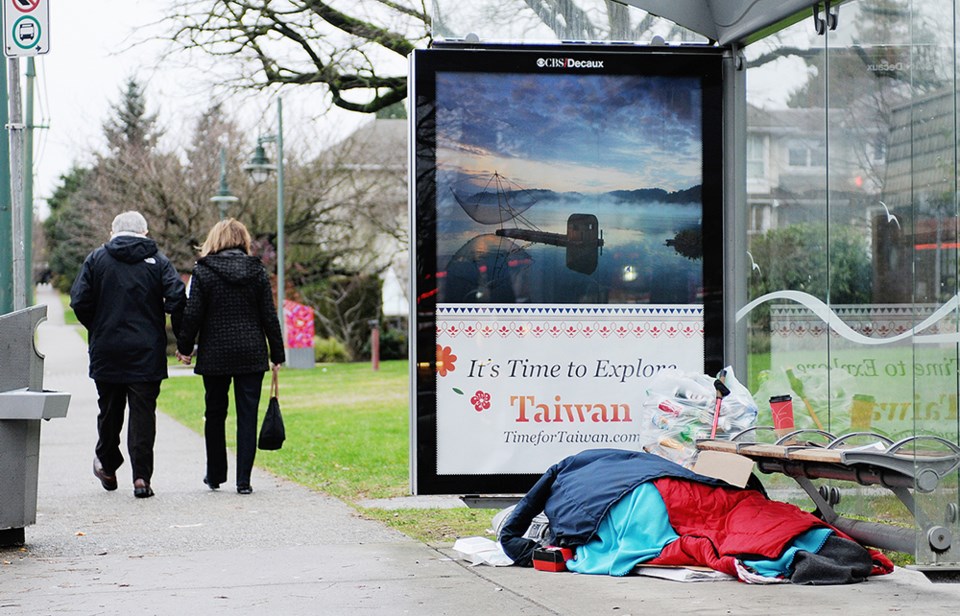See, municipal politics isn’t so boring after all.
Thank you, Toronto mayor Rob Ford.
But here in Vancouver, where the big news about Mayor Gregor Robertson’s personal life was that he moved from one house to another, the year at city hall only brought scraps of the food kind — as in the latest phase of a program to recycle kitchen waste and have the garbage man pick it up.
The year, however, wasn’t without unrest.
As the ruling Vision Vancouver council heard in 2012 and continued to hear into 2013, many residents across the city don’t like the changes coming to their neighbourhoods.
With new community plans on the go for Marpole, the West End, Grandview-Woodland and the Downtown Eastside, residents who have never banded together with neighbours or spoken to a reporter were suddenly protesting on their streets and taking their fight to the steps of city hall.
The common beef: Proposed changes for the neighbourhoods, including adding more dense living spaces such as condominiums, are moving way too fast. So put the brakes on development, they say.
“The city is going through dramatic changes and those are unsettling neighbourhoods a lot,” Vision Coun. Geoff Meggs told the Courier last month.
“I understand that and I agree that the changes are dramatic. What I think has been hard for some people is to understand the attempts made to balance that change with some of the other objectives voters want us to tackle, including housing and affordability, access to rapid transit and things like that.”
Meggs’ party claims it has added 1,021 new units of rental housing in Vancouver in 2012 alone, and another $81 million was set aside for affordable housing in the 2012-2014 capital plan. The city’s rent bank also celebrated its first anniversary this year, approving 137 interest-free loans.
Homelessness, however, is still a reality for 1,600 people, according to a count the City of Vancouver led in March 2013. Of those 1,600, city staff said 1,327 were in shelters and 273 were on the street. The city’s 2012 count revealed 306 people were living on the street and 1,296 in shelters.
Many of those people are mentally ill and addicted to drugs and that topic, again, garnered the attention of the mayor and Police Chief Jim Chu, who urged the provincial government to address the “crisis.”
Health Minister Terry Lake responded in November, outlining a $20 million plan that included adding psychiatric beds at St. Paul’s Hospital and increasing the number of outreach and community treatment teams.
Though ending homelessness was the reason Robertson ran for mayor, he has also spent a lot of time ensuring more separated bike lanes were added to Vancouver and he continues to lobby for a subway from the Commercial and Broadway transit hub to the University of B.C.
On that front, Robertson and his fellow mayors in the region were unanimous in opposing a referendum on transit funding that the provincial government says it will tie to the November 2014 election.
The mayors say the province should simply go ahead and spend the big money for transit upgrades — as it did when it decided to build a new Port Mann Bridge and widen the Trans-Canada Highway.
That new home Robertson moved into this year in Kitsilano factored in the mayor recusing himself from a controversial vote to support a $6 million plan said to improve safety for cyclists and pedestrians — while decreasing traffic — in Kitsilano and along Point Grey Road.
Around the same time, council approved a public bike share program of 1,500 bikes and 125 stations whose implementation will likely be delayed at least until the summer of 2014, if not longer.
As for the much-talked about Georgia and Dunsmuir viaducts, council agreed to delay a vote on whether the hulking structures should be demolished until after the November 2014 civic election.
Also downtown, it appears the Vancouver Art Gallery will get a new location near the viaducts if the gallery can raise the $350 million required to satisfy city council.
With next year being an election year, Robertson and his Vision team will seek a third term but will be met with a serious challenge from the NPA, which used to be the party of choice at city hall.
So far, the NPA hasn’t named its mayoral candidate.



